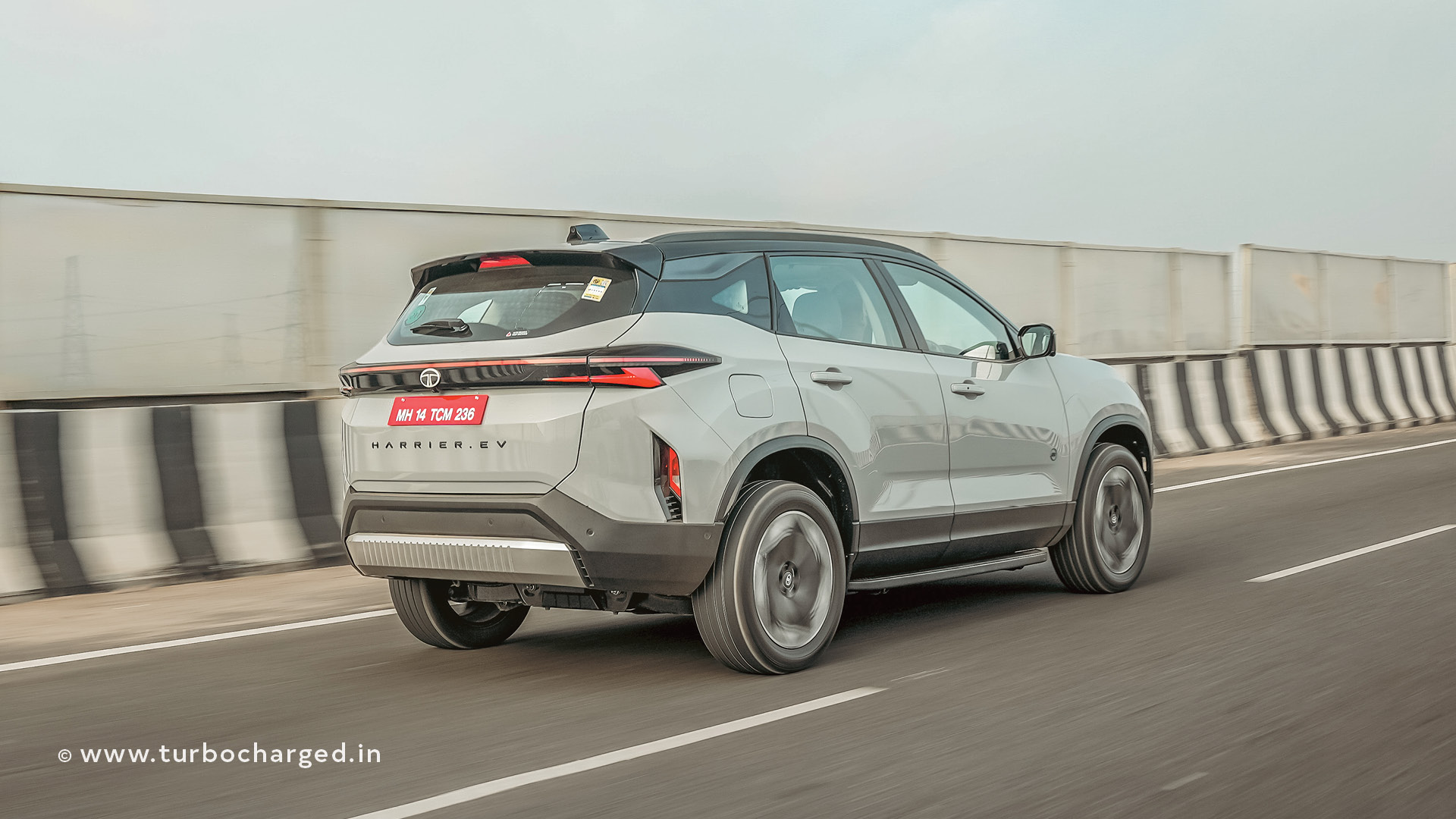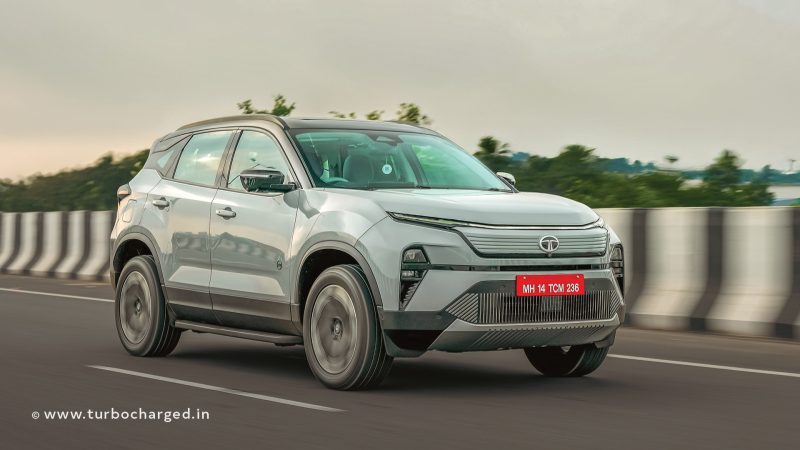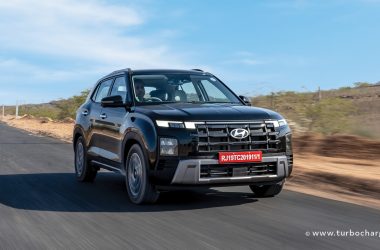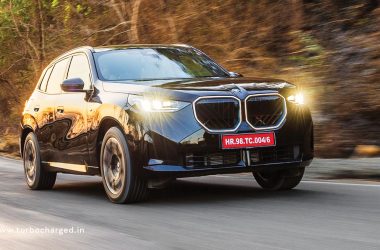Words: Abhay Verma, Photography: Shrenith Bhandary, Saidatta Naik
The past half decade has seen Tata Motors chart an interesting journey as a car maker, especially when it comes to EVs. The homegrown auto maker had humble beginnings in the electric vehicle space with its Tigor EV but the Nexon EV that it soon thereafter, became a runaway success. And from offering more range per charge and EV-specific features, to developing EV-specific platforms, we’ve seen Tata Motors do it all in this relatively short time span. The Harrier EV, or rather Harrier.ev as the car maker likes to call it, is a big deal too, given the technology it packs in, its overall engineering and of course, the employment of dual electric motors and an array of features that we’ve not really seen before. Oh, and let’s also not forget, employing dual electric motors has helped Tata Motors offer the Harrier EV with an all-wheel drive system, making this one its first ‘proper’ SUV since the Safari Storme!
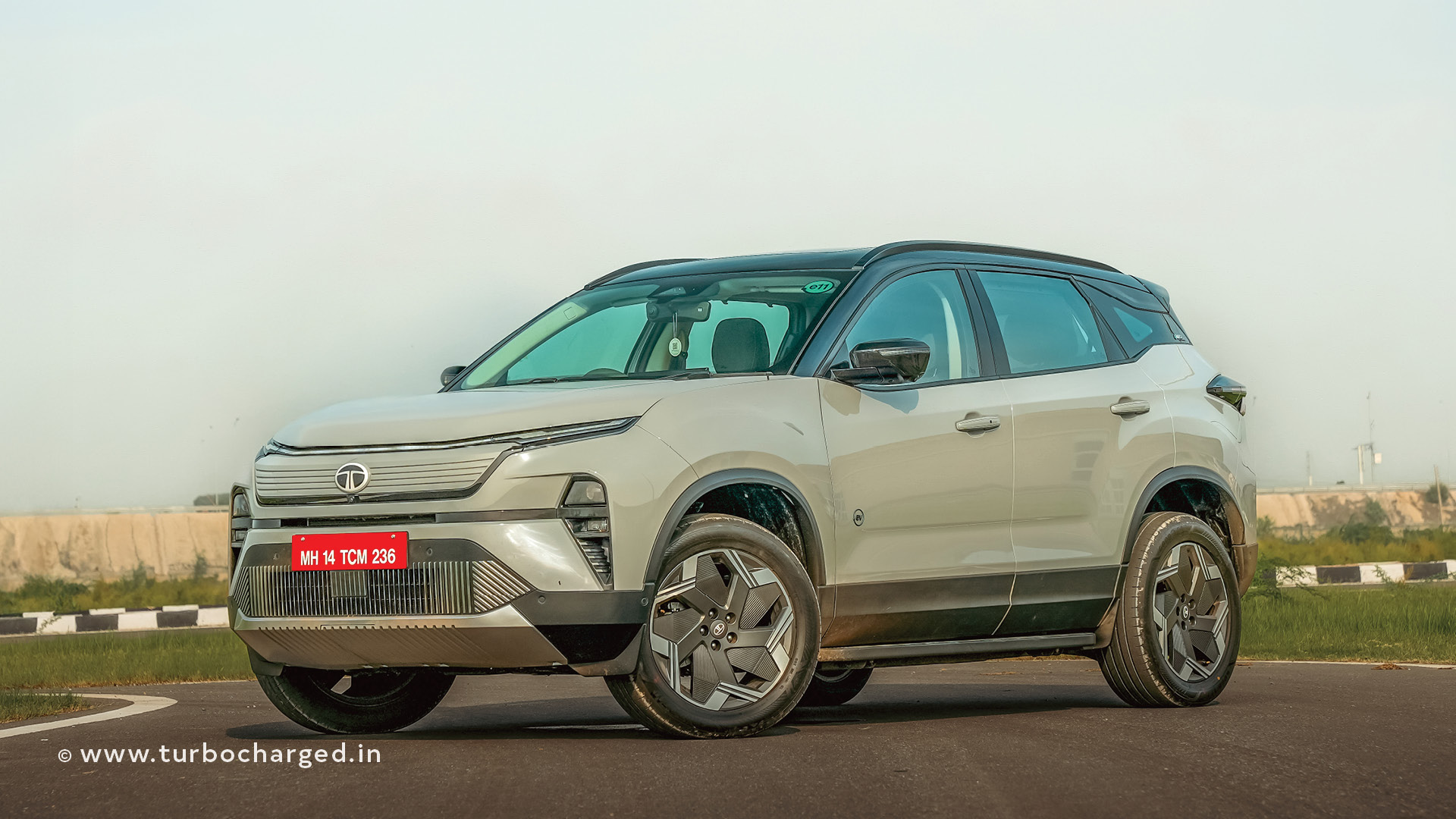
Unsurprisingly, the car maker has been making serious efforts to market the Harrier.ev as a hardcore SUV and one that can take you places. And after getting to witness – and briefly experience – the Harrier.ev off-road at Tata Motors’ ‘Quad Day’, we finally got a chance to the drive SUV on road and off it too, besides getting to experience its exhaustive list of features. But before we get to the driving bit, let’s talk about the Harrier.ev’s design. Interestingly, the Harrier EV looks very similar to its internal combustion engine powered version from all angles. Up front, there’s a new closed off grille – typical of EVs – along with a revised bumper, but the changes are not radical. Move to the sides and you’ll first notice the new design for the 19-inch wheels, besides which the EV badge on the front doors is perhaps the only way to tell this one apart. The EV badge at the rear is again one of the only giveaways, along with some minor differences and the absence of a tailpipe. Overall, the Harrier.ev does not look very different from the original, and in my books, that’s a good thing, as it makes for a sense of familiarity.
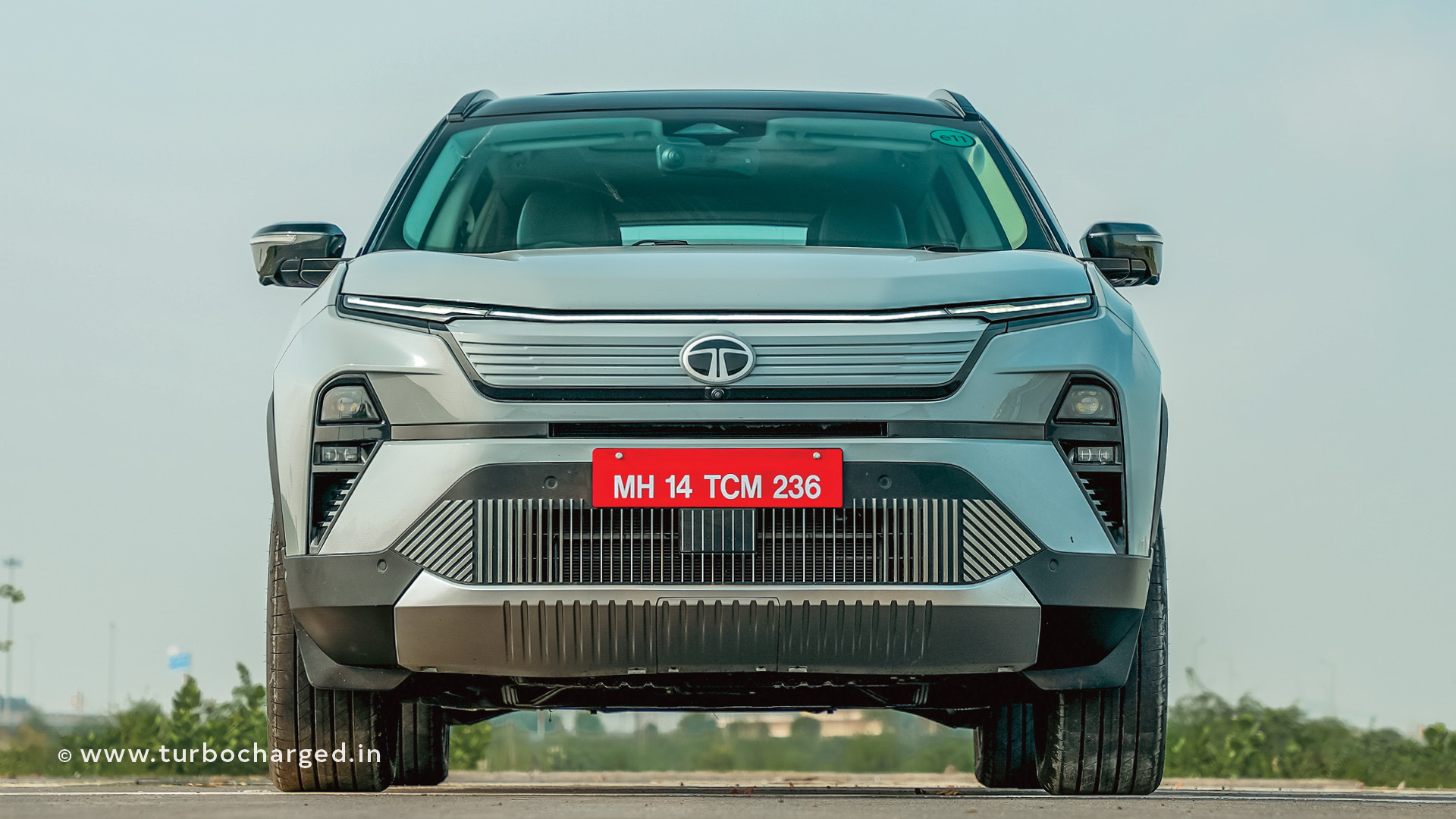
The same thought process continues inside the cabin, as Tata Motors hasn’t deviated too much from the standard Harrier’s interior design, especially the dashboard design. A big change though is the new touchscreen – it may not look very different from the standard Harrier’s, but this is a 14.5-inch Neo QLED display from Samsung. Importantly, Tata Motors tells us this the first time in the world that a display like this one has been employed in an automobile. The dashboard looks familiar, especially given the positioning of the air-conditioning vents and the touch panel below them for the dual-zone climate control system. The flat-bottomed steering is the same too, and so is the driver display. A large rotor has been added to the centre console, which sits in front of the stubby gear lever. The panoramic sunroof does its thing in terms of offering an airy feel, in addition to the light grey and beige interior theme. Like before, seats are comfortable and easy to adjust, with ample legroom and kneeroom in the second row.
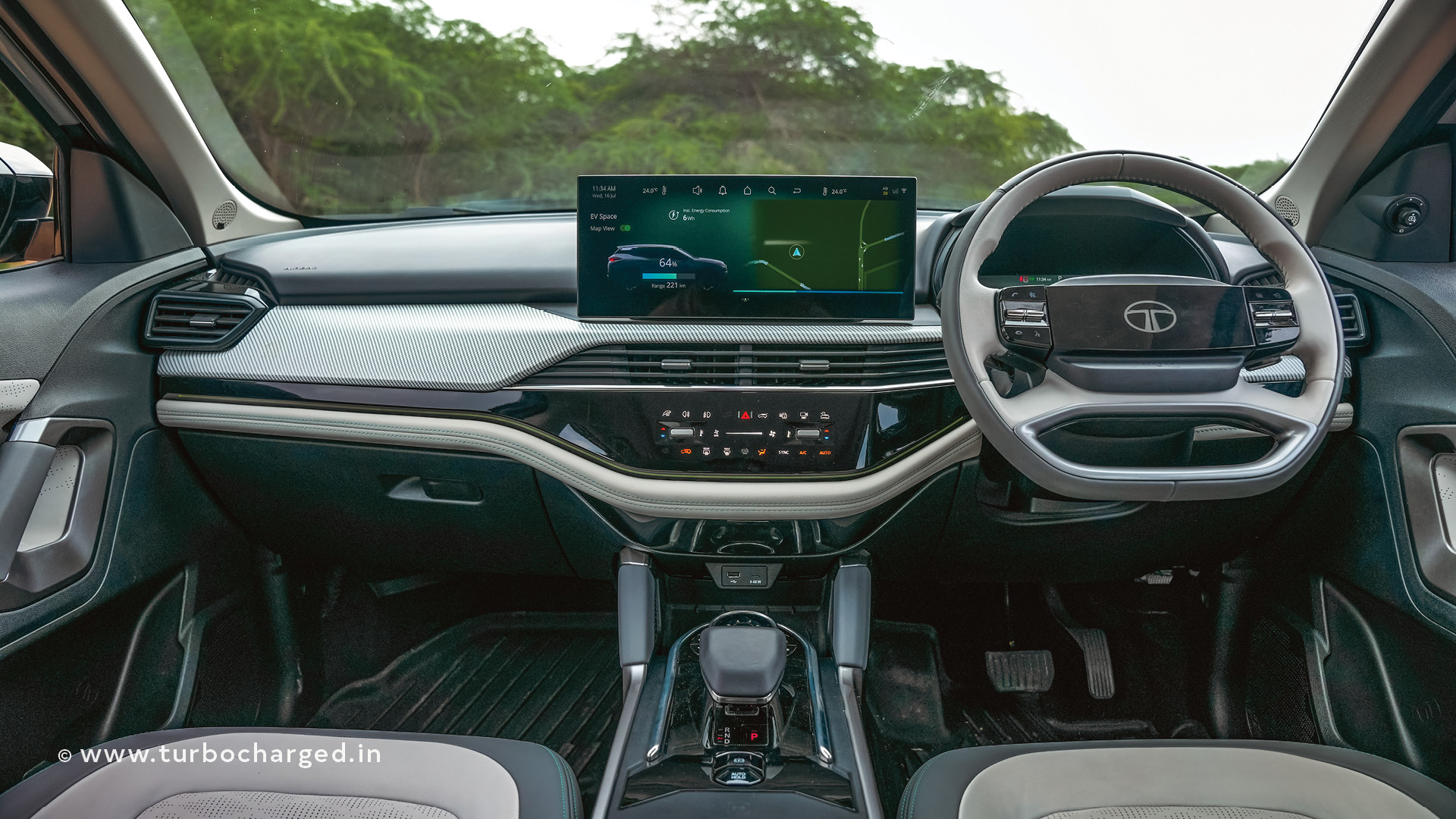
Unlike a lot of other EVs the Harrier.ev’s floor is flat which adds to comfort, besides which second row occupants also get the now common ‘Boss’ mode to move and adjust the front passenger seat, along with a set of sun blinds. Second row headrests also get a new design, which should make taking a nap a more comfortable affair given their contoured shape. The Samsung QLED screen impresses immensely with its sharp resolution and bright colours, and is good enough to put a lot of laptop screens to shame. You also get a brilliant sounding JBL audio system with 10 speakers and Dolby Atmos 5.1, so turning the Harrier.ev into your personal theatre and watching movies on its infotainment screen while you are parked and charging the vehicle will be a temptation. Tata Motors has also added a UPI-based in-car payment system called ‘Drive Pay’ to help in making payments for charging easy. You also get a Range Rover-style camera-based digital rear-view mirror (which takes a few minutes to get used to) and a ‘540-degree’ view offered by the cameras all round, as they let you see what’s under the car, which be of help while off-roading. These are besides regular features like ventilated front seats, Level 2 ADAS. Additionally, the Harrier.ev also comes with a Summon mode that lets you move the SUV forwards or backwards remotely using the key fob, and an auto park function that lets the SUV park itself in a spot of your choice.
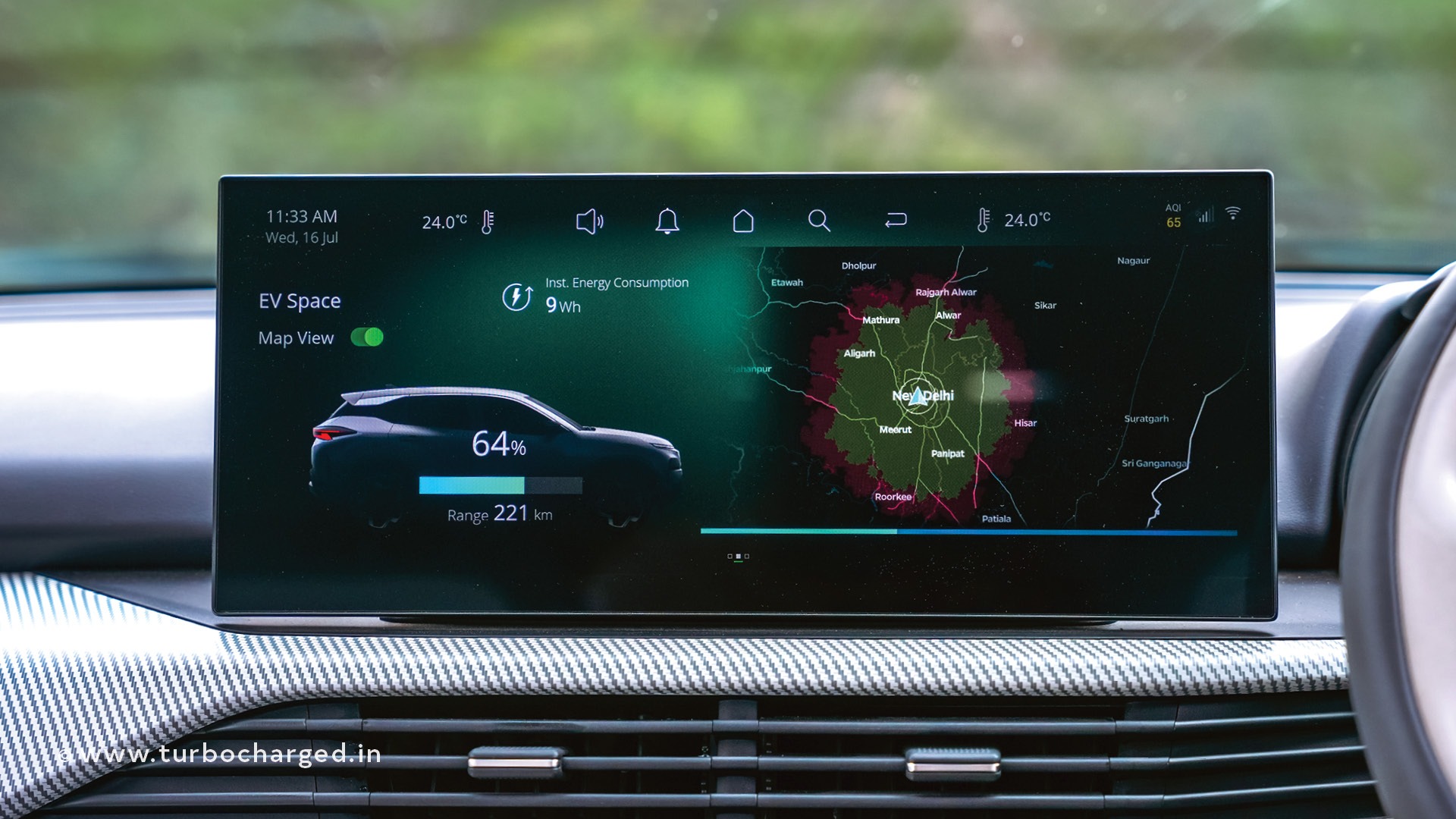
We only drove the all-wheel drive version with one electric motor on each axle, where the combined outputs are a very impressive 313PS and 504Nm. The Harrier.ev is thus seriously quick and claimed 0-100kmph time is a mere 6.3 seconds, despite its kerb weight of 2.3 tonnes! What’s even more impressive is that the SUV pulls hard even above 100kmph, unlike a lot of other EVs where power delivery tapers off as you go faster. I also like the throttle responses, as they’re almost as progressive as petrol-powered SUVs. In addition to Eco, Normal and Sport modes you also get a Boost mode that offers additional thrust for a few seconds. Well, there’s a Drift Mode too, but sadly, it does not turn the Harrier EV into a RWD, tyre-shredding drift machine. If only!
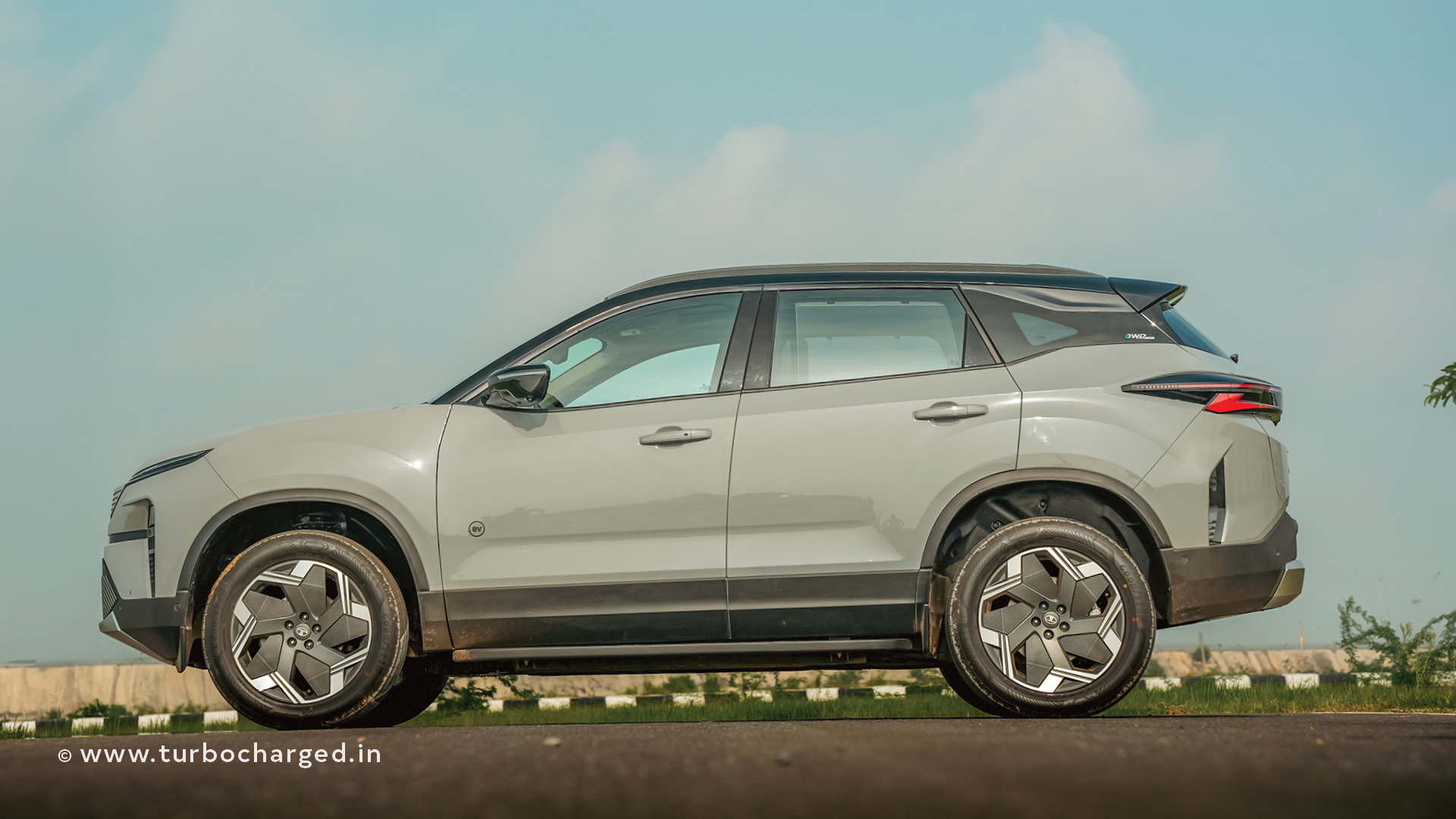
The Harrier.ev uses independent suspension at both ends, resulting in an excellent ride quality. In fact, the ride quality feels a lot better than the standard Harrier’s, and a lot of credit for this goes to the frequency dependent dampers here, as they soak up ruts, potholes and more with great ease. The suspension also makes for very impressive handling, as the Harrier.ev offers a highly planted feel at highway speeds, besides feeling confident around corners. And finally, let’s talk about driving off-tarmac. Tata Motors had set up a small but interestingly designed off-road course to test the Harrier.ev’s all-wheel drive system. It included multiple challenges like a steep incline, a slope, low traction surfaces and more and after tackling those in it, I have to say, the Harrier EV is easily the most capable electric SUV on sale in the country. It feels perfectly at ease doing the kind of stuff you only expect hardcore SUVs to, and while not many buyers will go off-roading, Tata Motors has ensured the Harrier.ev has the ability, is they wish to. In a nutshell, the Harrier.ev is quite the package. Prices for the two-wheel drive version with the 65kWh battery begin from ₹ 21.50 lakh ex-showroom, which is an aggressive price point. The all-wheel drive version with the larger, 75kWh battery pack retails from ₹ 29 lakh ex-showroom onwards, which is also quite impressive given the abilities and the performance on offer. Given its abilities and feature list, the Harrier.ev could thus become the cat among the pigeons, as far as mass market electric SUVs go!
